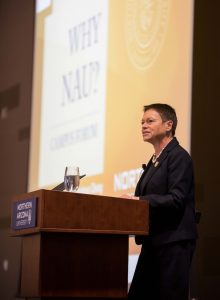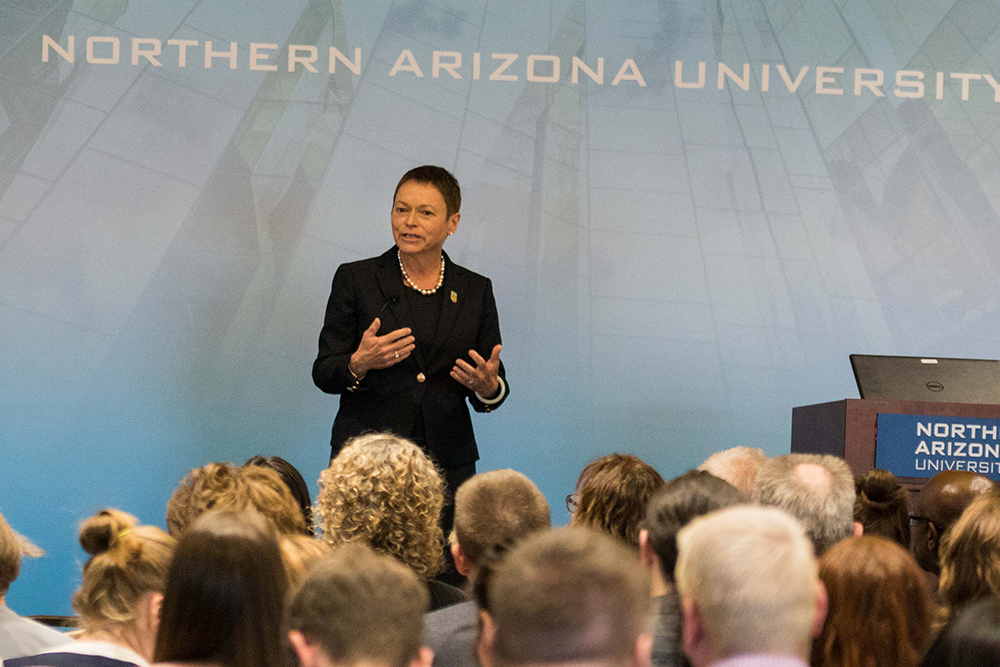Why NAU?
President Rita Cheng has a few ideas.
“There is a demand that we explain why NAU is succeeding—why our enrollment is growing, why we focus on research and new programs, why the state should invest in our buildings and our students. Why we have athletics, or why we market NAU. Why we seek new partnerships, and why we have general education requirements.
There is more attention on why we respond the way we do—why we welcome changes, why we extend our focus beyond Flagstaff or why we reshape our vision.”
Cheng spoke to students, faculty, staff and the Flagstaff community during the campus forum held Wednesday, March 29, at the High Country Conference Center. View the full PowerPoint slideshow or watch the recorded presentation online. During her presentation, which was followed by a question and answer session, Cheng discussed a variety of topics, including NAU’s budget and tuition proposal, the importance of state support, enrollment and retention growth and expanding NAU’s reach throughout the state and online.
The theme of transparency ran through the speech, focusing on NAU’s accountability to a variety of stakeholders—students, faculty, staff, alumni, business and community partners, the Arizona Board of Regents and the state government. Cheng also reiterated her administration’s commitment to preserving the factors that have made NAU successful and building on them for the university’s future.
Cheng discussed NAU’s mission and vision and the strategic planning process that will build on past successes and allows for a continued focus on student success, cutting-edge research and building a diverse, curious, talented collegiate community that stretches beyond Flagstaff and throughout the state. This process has already resulted in better tools for student advising, both first-year and transfer students; more programs for research, study abroad and community involvement; greater diversity in the student body, with an international student population that has tripled in the last decade; and more partnerships with community colleges, school districts and cities throughout the state.
She also addressed the university’s continued growth and the associated growing pains on campus and within the community. The university has focused on increasing growth on other campuses throughout the state and in its online programs, but the Flagstaff campus continues to grow as well. Cheng acknowledged there are questions about whether NAU can afford to continue growing at the rates it has for several years.

“But most of all, we are responding to the interest of students who recognize the value that comes from each of you—the commendable quality of instruction, the dedication of a faculty who knows the value of student connections and the ongoing pursuit of excellent that is at the core of all our programs.”
She returned again to her first question—why NAU? Because, Cheng said, the world looks different from here, opportunities abound, and success comes because of the dedication of all of the faculty and staff who work every day to make NAU a beautiful, safe and productive learning environment.
“We are not afraid to answer ‘why?’” she said. “We know why we are successful—why more students are choosing us, why we draw such accomplished faculty and staff and why our influence is growing in Flagstaff and across Arizona. We know why we need to change to respond to that success and why it is important to protect the NAU experience throughout the changes.”



